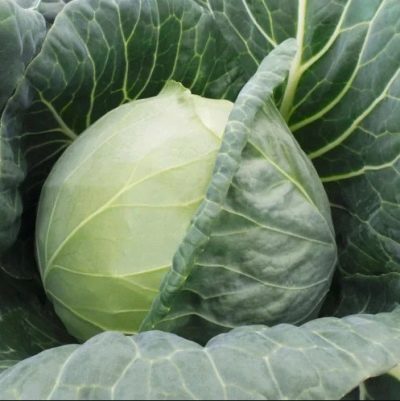
- Year of approval: 2005
- Appointment: for fresh consumption, for all types of processing
- Leaf rosette: raised
- Leaf size: small
- Leaf color: blue-green
- Sheet surface: slightly bubbly
- Outside stump: short
- Internal stump: middle length
- Weight, kg: 1,4-2,0
- Taste qualities: excellent
Farao is a hybrid white cabbage that was approved for use in 2005. This vegetable has tremendous benefits, including high levels of vitamin C, and can be used as a foundation for a healthy diet.
Description of the variety
This hybrid can be grown outdoors or indoors, depending on the climatic conditions. It tolerates low temperatures and heat well. The variety is high-yielding and has a high marketability of fruits - 94%, therefore, Farao can be transported without problems even over long distances. In addition, the advantages of the culture include high immunity to common diseases and excellent fruit taste.
Characteristics of the appearance of the plant and heads of cabbage
Farao is characterized by a raised rosette, small slightly bubbly leaves with a wave along the edge, as well as a short outer stump and an inner stump of medium length. A head of cabbage reaches a mass of 1.4-2 kg, outside it is emerald green, and inside it is white. Its density is estimated at 4.0-4.5 points.
Purpose and taste
The taste of this hybrid is unusual, but very pleasant, with a pungent aftertaste, its texture is delicate, crunchy, and therefore is perfect for preparing a light fresh vitamin salad.
Ripening terms
This is an early-ripening variety of cabbage, which already in 110 days after germination gives fruit at the stage of technical maturity. Harvesting usually takes place in July-August.
Yield
On average, Farao gives 383-514 centners per hectare of vegetables. It is better to harvest in cloudy weather, so that the fruits do not begin to dry out in the sun. Forks are cut with a sharp knife with the bottom four sheets - this way they will be better and longer stored. Cut heads of cabbage are placed in a basement or cellar, but before that, the room should be well disinfected. Long-term storage does not affect the taste and marketability of vegetables.
Growing and caring
Sowing is carried out in March, and transplantation to the dacha is carried out in April-May. For planting, give preference to sunny areas, closed from drafts. The hybrid will feel comfortable in drained fertile soil, and potatoes or legumes will become the best neighbors for it. When transplanting, dig holes up to 20 cm deep according to a 60x40 cm pattern and place young bushes there.
Further care consists in regular watering. Irrigation is required as soon as the soil becomes dry to the touch. It is better to perform the procedure in the evening or early in the morning, and direct the jet strictly to the root. After each watering, it is recommended to loosen the beds so that oxygen and moisture can easily penetrate the roots. And also during this procedure, weeds should be weeded out.
For the entire season, the hybrid needs to be fed three times. For the first time, the bed is fertilized two weeks after transplanting, mullein or bird droppings are used. The next time the plant is fed after three weeks, this time mineral compositions are suitable. The third top dressing is applied when the heads of cabbage are formed, and now products containing potassium or phosphorus will be relevant.

To grow a rich cabbage crop, you need to know when and how to plant this crop outdoors. Planting dates are determined depending on the variety. It is also necessary to properly prepare the soil and follow the rules of crop rotation.



Cabbage requires particularly careful care when growing. The plant quickly absorbs nutrients, so the soil needs to be enriched regularly. Adequate amounts of minerals, organics and nitrogen must be provided. Some products can be purchased at the store, while others are easy to make at home.
Disease and pest resistance
This variety is not affected by fusarium, and is also not prone to cracking of fruits, however, if the rules of agricultural technology are violated, it can be affected by other ailments. For example, with keel, the occurrence of this disease will be prevented by a solution of colloidal sulfur, as well as the preparations "Previkur", "Topaz" or "Alirin-B".
Of insects, Farao can infect a scoop, pesticides will help to overcome it. Another enemy of the hybrid is the white butterfly, the drugs Fitoverm, Vertimek and Antitlin-P have proven their effectiveness against this individual.

Cabbage is a very popular horticultural crop. But growing a good, large and tasty cabbage is sometimes very difficult, because it is often affected by a huge number of diseases and pests. The main role in the cultivation of this vegetable is played by regular prevention, which helps to get a rich harvest, and prevent the occurrence of diseases and the invasion of harmful insects. It is very important to start treatment as early as possible, otherwise there is a risk of spreading the infection to unaffected plants.























































































